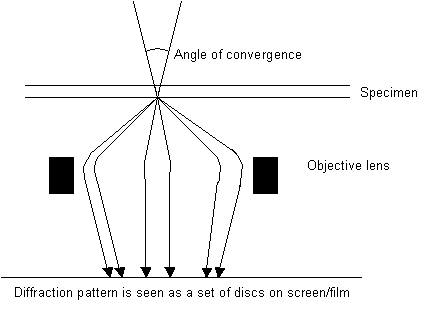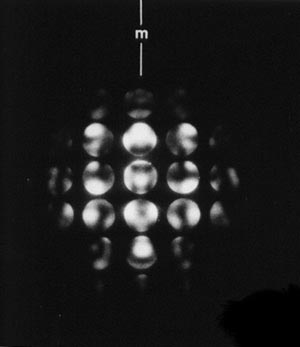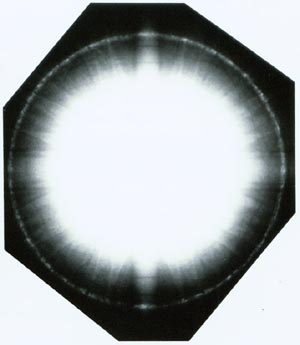Convergent beam electron diffraction (CBED)
When a convergent beam is used instead of a parallel beam of electrons, the rays converge to a point within the specimen and come out the other side inverted like a camera. However, we do not look at the inverted image; we look at the diffraction pattern, with the spots magnified:

Depending on the camera length chosen, either the zero order Laue zone can be examined or the zero order Laue zone and higher order Laue zones. Two examples of CBED images are shown below. The symmetry seen is such patterns can be related to the space group symmetry of the specimen.
Examples of CBED images:
|
Diffraction pattern showing a zero order Laue zone |
Diffraction pattern showing a first order Laue zone |



